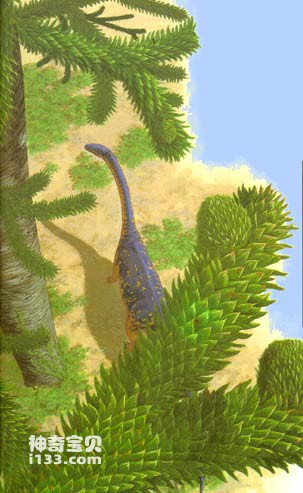About 208 million years ago, a global catastrophe wiped out many species of animals. This marks the end of the Triassic Period and the beginning of the Jurassic Period.
What caused this catastrophe? Scientists have proposed several explanations. Maybe, because a huge asteroid hit the earth; maybe, because changes in the earth's interior caused a series of volcanic eruptions. These events will cause drastic changes in the Earth's climate. There is also a possibility that the Pangea that merged into one during the Triassic period slowly decomposed into some smaller landmasses, which caused changes in the local environment.

Longospondylus
Regardless, while many large reptiles became extinct at this time, small dinosaurs, small terrestrial crocodiles, and mammal-like reptiles survived the environmental changes. Among them, dinosaurs are the most important group because they became the masters of the earth in the following 140 million years. At the same time, the face of vegetation on Earth also changed, with evergreen shrubs and trees with dense foliage beginning to become the most common type.
Zimbabwe in southern Africa had such an Early Jurassic landscape 200 million years ago. At that time, Zimbabwe was an almost barren desert, with bare sand dunes covering many areas. However, a variety of plants, from dwarf ferns to tall conifers, still thrive in this harsh environment. Of course, various animals are also "competing for freedom in the frosty sky", and the protagonists are of course dinosaurs of all kinds, big and small. Longospondylus is one of these dinosaurs that belongs to the paleopod.
Longospondylus is a medium-sized dinosaur with a light structure, 4 to 5 meters long and weighing less than 200 kilograms. Their heads are small and narrow, but their eyes and noses are quite large, so their vision and sense of smell must be very sensitive. Some of their teeth are grooved, while others are flat. Their upper jaw is unique and protrudes forward beyond the lower jaw. Therefore, their lower jaw is likely to have a beak-like beak covering the outside of the skeleton.
Not only did Longospondylus once live in southern Africa, but their fossils have also been found in Arizona, the United States. They are important representatives of paleopod dinosaurs.
animal tags:
We created this article in conjunction with AI technology, then made sure it was fact-checked and edited by a Animals Top editor.